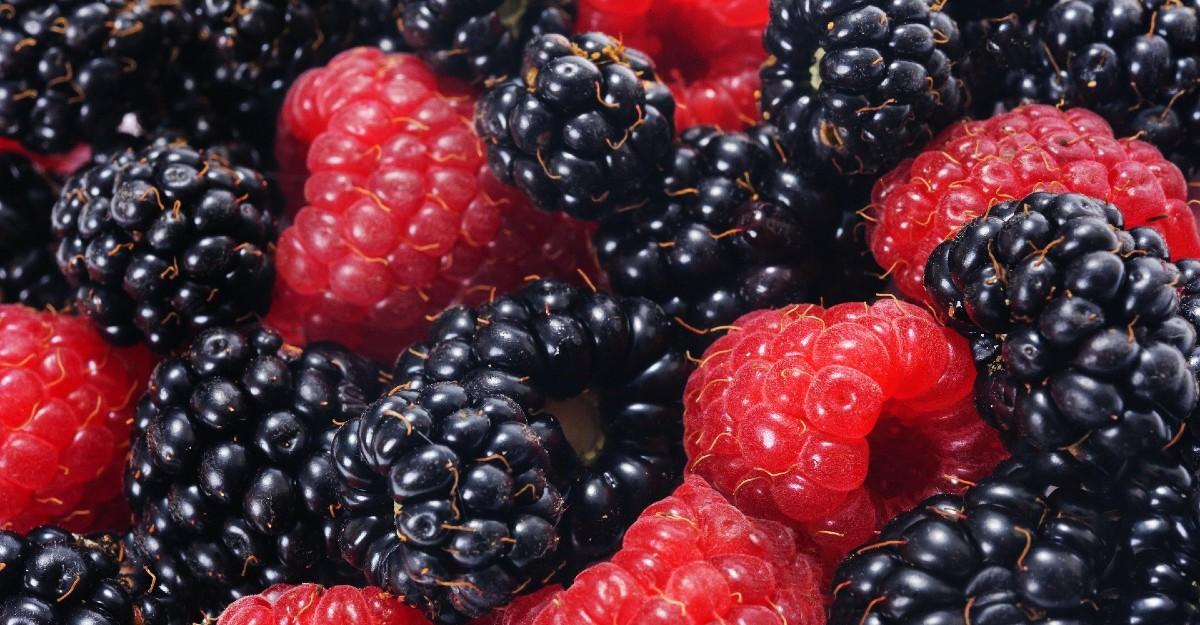About raspberries and blackberries ("brambles")
Raspberries, blackberries, and their relatives (boysenberries, marionberries, loganberries, dewberries, etc.) are collectively known as brambles. These species and hybrids belong to the Rubus genus, part of the rose family (Rosaceae). Black raspberry (Rubus occidentalis) and several blackberry species grow wild across Maryland, and many gardeners plant and enjoy a variety of cultivated types. Raspberry is somewhat less heat-tolerant than blackberry.
Bramble flowers have 70-125 pistils (female part) and each pistil contains two ovules. One ovule develops into a seed, and the other into a drupelet containing the seed. Each fruit is made up of a large number of drupelets, collectively called an aggregate fruit.
Bramble growth cycle
Bramble crowns and roots are perennial. Canes are biennial with the following typical life-cycle:
-
Each spring, new shoots emerge from crown buds at the base of the plant.
-
These first-year shoots, known as primocanes, grow and produce lateral (side/secondary) branches during the summer.
-
At the end of summer, flower buds are formed on the primocane stems, though they do not bloom. Primocane stems go dormant in autumn and survive their first winter.
-
In the second growing year, those one-year-old canes, now called floricanes, produce flowers and fruit on main stems and laterals (side branches). Lower parts of the canes are unproductive.
-
Floricanes die after fruiting and must eventually be removed because they will not produce another harvest or survive a second winter. Usually, this pruning is done in late winter before new canes begin coming up.
Some cultivars produce fruit on primocanes:
-
Primocane-bearing raspberry and blackberry cultivars produce fruit on first-year canes. They fruit later in the summer compared to floricane-bearing cultivars that fruit in June, and will often produce fruit until the first frost.
-
Most gardeners cut and remove the canes after harvest in the dormant season, which simplifies maintenance.
-
Red raspberry and blackberry produce root suckers that emerge close to or far from the crown. Black raspberry produces new shoots from the crown area only. Purple raspberry produces shoots mostly from the crown with some emerging from the roots.
Growth habits (Types)
Blackberries and raspberries are categorized based on how they grow (upright or sprawling growth habit) and which stems produce fruit.



